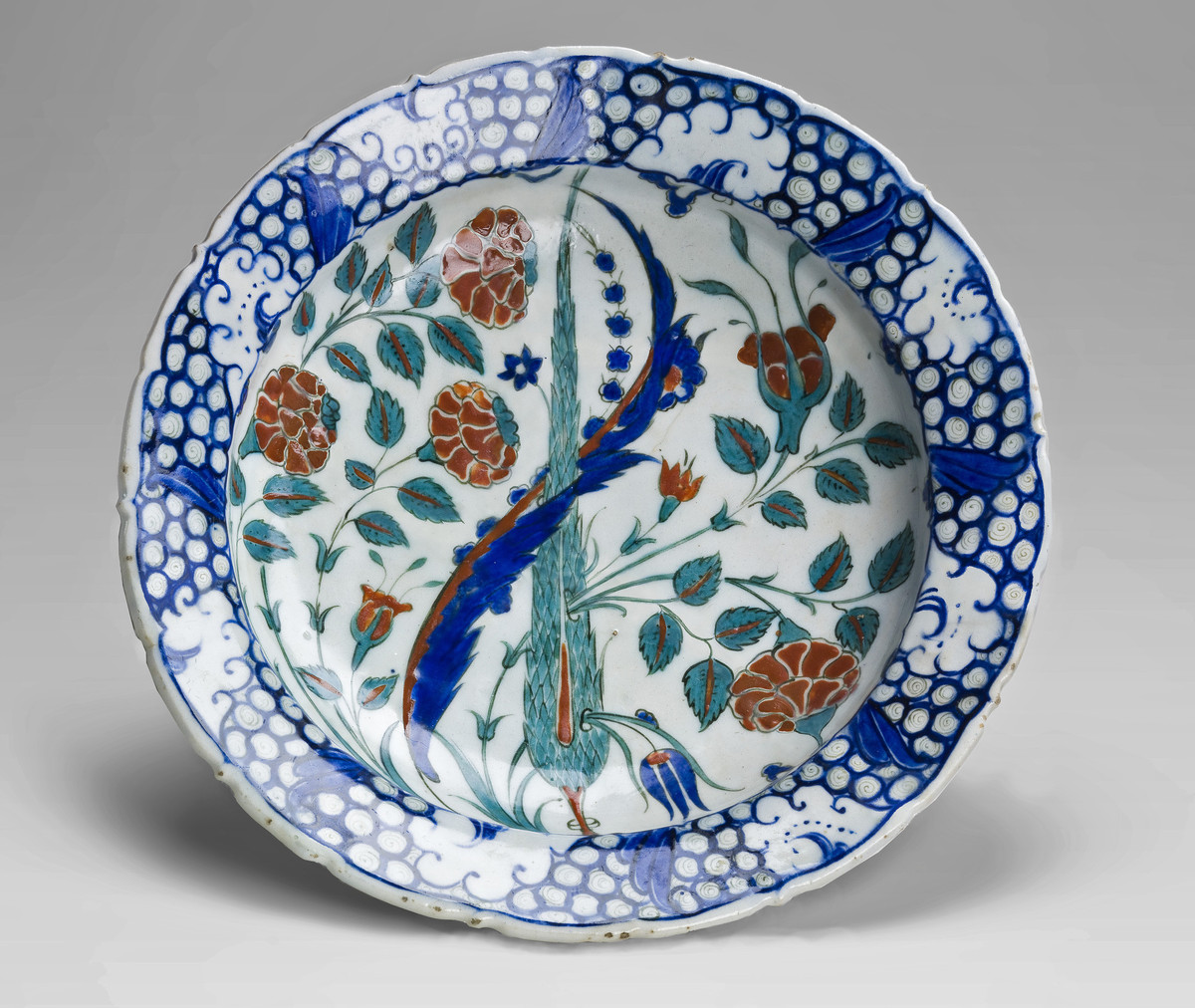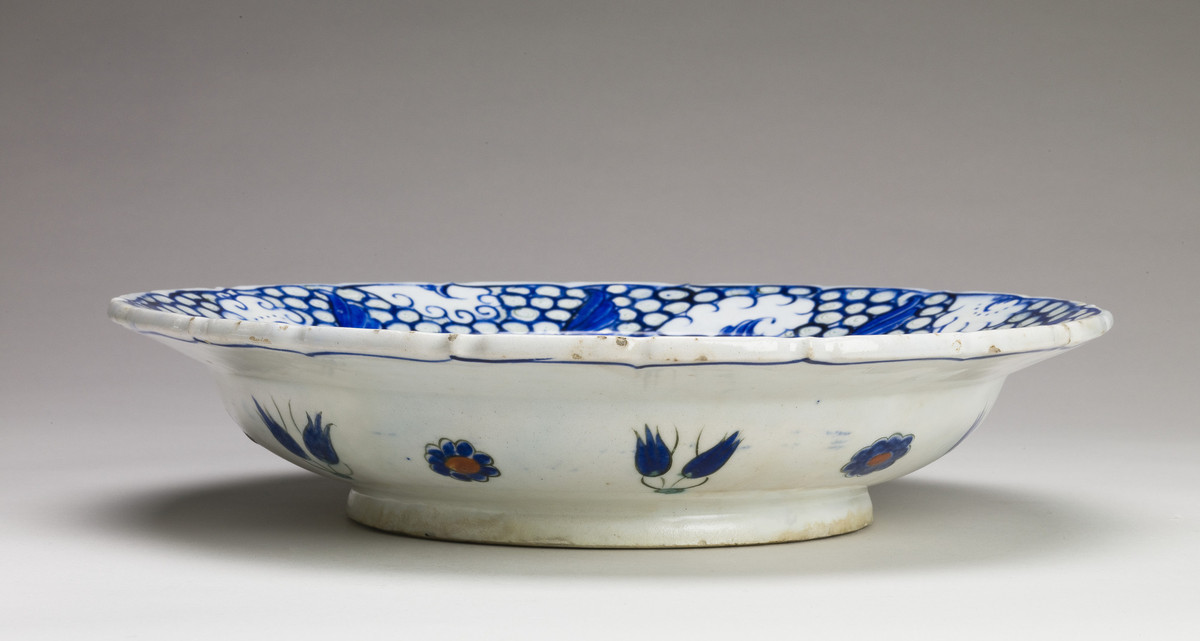On View
Unknown
Turkish
Place made: Asia; Turkey; Iznik
Dish with saz leaf and cypress tree, ca. 1580-1590 (Ottoman Period, 1299-1923)
Overall: 2 7/8 in x 13 in; 7.3 cm x 33 cm
Purchase with the John Martyn Warbeke Art Fund and the Belle and Hy Baier Art Acquisition Fund
MH 2006.5

 GIVE
GIVE
